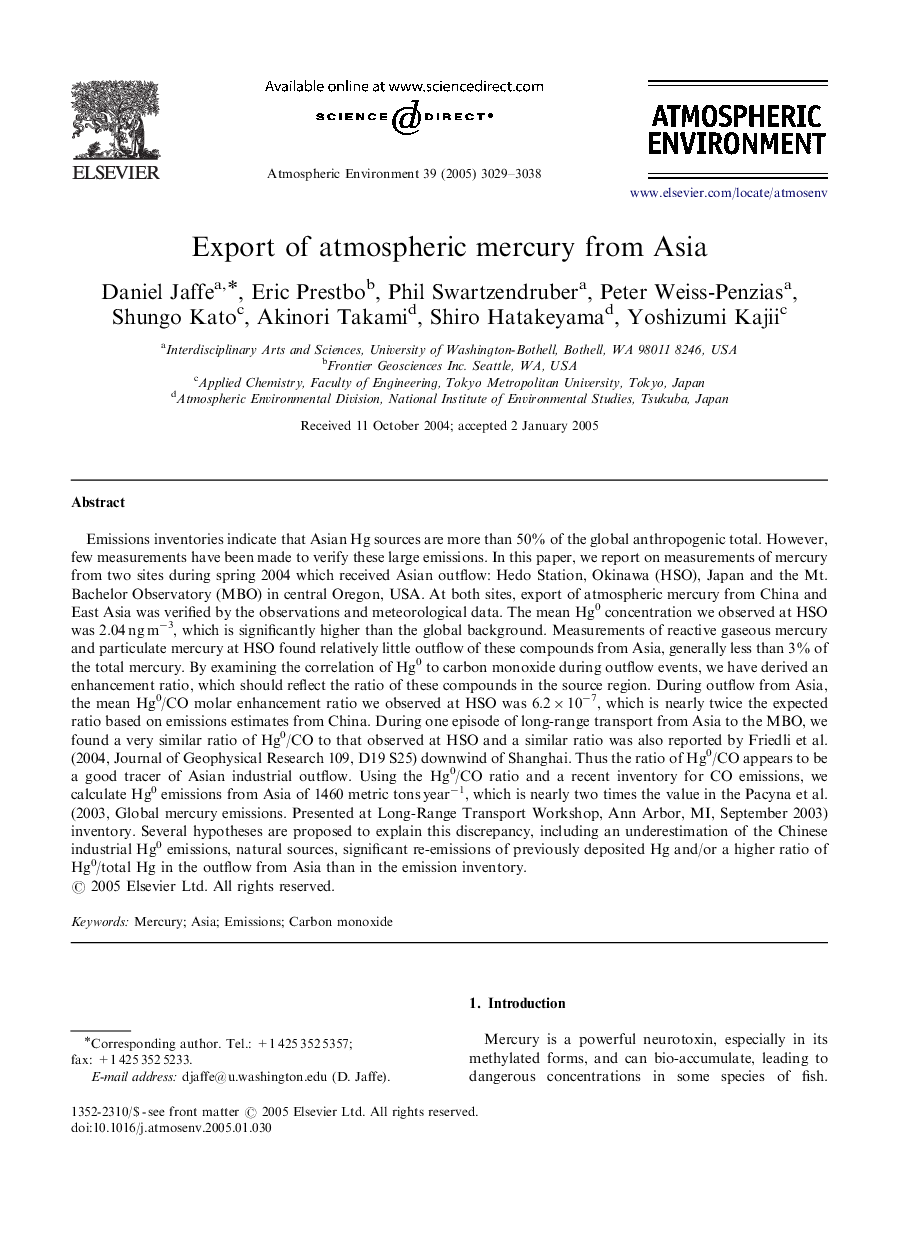| Article ID | Journal | Published Year | Pages | File Type |
|---|---|---|---|---|
| 4445566 | Atmospheric Environment | 2005 | 10 Pages |
Emissions inventories indicate that Asian Hg sources are more than 50% of the global anthropogenic total. However, few measurements have been made to verify these large emissions. In this paper, we report on measurements of mercury from two sites during spring 2004 which received Asian outflow: Hedo Station, Okinawa (HSO), Japan and the Mt. Bachelor Observatory (MBO) in central Oregon, USA. At both sites, export of atmospheric mercury from China and East Asia was verified by the observations and meteorological data. The mean Hg0 concentration we observed at HSO was 2.04 ng m−3, which is significantly higher than the global background. Measurements of reactive gaseous mercury and particulate mercury at HSO found relatively little outflow of these compounds from Asia, generally less than 3% of the total mercury. By examining the correlation of Hg0 to carbon monoxide during outflow events, we have derived an enhancement ratio, which should reflect the ratio of these compounds in the source region. During outflow from Asia, the mean Hg0/CO molar enhancement ratio we observed at HSO was 6.2×10−7, which is nearly twice the expected ratio based on emissions estimates from China. During one episode of long-range transport from Asia to the MBO, we found a very similar ratio of Hg0/CO to that observed at HSO and a similar ratio was also reported by Friedli et al. (2004, Journal of Geophysical Research 109, D19 S25) downwind of Shanghai. Thus the ratio of Hg0/CO appears to be a good tracer of Asian industrial outflow. Using the Hg0/CO ratio and a recent inventory for CO emissions, we calculate Hg0 emissions from Asia of 1460 metric tons year−1, which is nearly two times the value in the Pacyna et al. (2003, Global mercury emissions. Presented at Long-Range Transport Workshop, Ann Arbor, MI, September 2003) inventory. Several hypotheses are proposed to explain this discrepancy, including an underestimation of the Chinese industrial Hg0 emissions, natural sources, significant re-emissions of previously deposited Hg and/or a higher ratio of Hg0/total Hg in the outflow from Asia than in the emission inventory.
